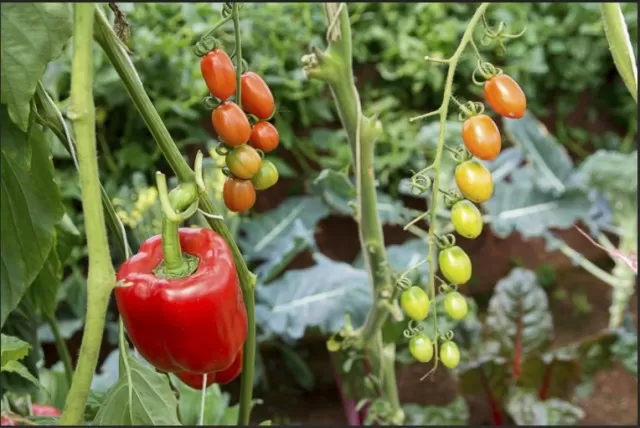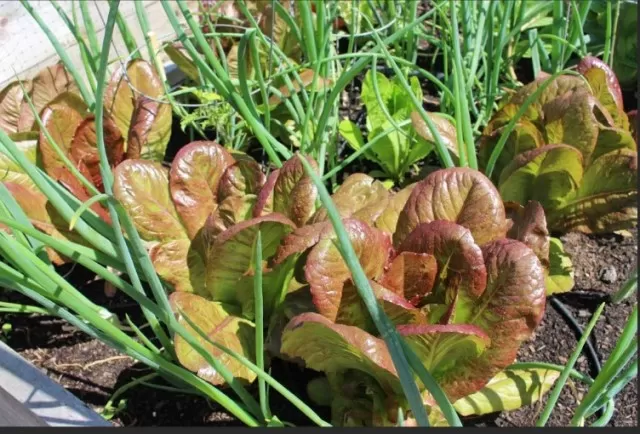Companion Plants for Better Growth and Health. Indeed, there’s a profound beauty in the harmony of collaboration. Some things simply work better together when united by a common purpose or shared vision. Whether it’s the synergy between people, the symbiosis among nature’s elements, or the fusion of ideas, the power of working in tandem has a remarkable way of yielding greater results and enhancing the overall experience.
In the realm of human endeavors, teamwork is often the key to success. When individuals come together, pooling their diverse skills, perspectives, and talents, they can achieve feats that would be impossible in isolation. In the workplace, cohesive teams can overcome challenges, innovate, and create lasting impacts, fostering an environment where each member’s strengths compensate for the other’s weaknesses.
Nature also exemplifies the significance of harmonious partnerships. Just as companion plants in a garden support and protect each other, animals form intricate ecosystems where each species contributes to the delicate balance of life. From the intricate dance of pollinators and flowers to the cooperative strategies of predator-prey relationships, nature’s collaborative symphony is a testament to the efficacy of working in unison.
Cultivating Unity: The Power of Teamwork in Nurturing Your Garden

The flourishing secrets of your garden: sunlight, raindrops, and the harmony of teamwork!.
In the realm of nature, just as among humans, plants form diverse relationships with one another.
Some exhibit remarkable benevolence by lending support to their neighboring flora, while others exhibit a more dominant demeanor, often bullying their less resilient counterparts. Those exhibiting supportive traits are hailed as “companion plants” and are fondly referred to as “helpmates” in the gardening community.
These invaluable companions forge alliances in the pursuit of essential nutrients and Resources, while also serving as each other’s guardians, warding off the threats posed by pests.
Indeed, the allure of companion plants lies in their ability to work in unison, fostering an environment where each member contributes to the collective well-being.
Just like a tightly-knit team, these botanical partners exemplify the beauty of collaboration and interdependence. As they intertwine their roots and intertwine their destinies, a symphony of growth and prosperity fills the air.
When basking in the embrace of a cohesive garden community, the plants appear to thrive effortlessly, as if they possess a shared purpose and an unwavering commitment to the success of one another.
The garden becomes an orchestra of harmonious interactions, where each member plays a unique role, enriching the soil with their individual strengths and skills.
As you cultivate your garden, take inspiration from these naturally formed partnerships.
Embrace the art of companionship among plants, for when they unite their forces, they transform into an unstoppable force of nurturing power. Just like the gentle interplay of sunshine and rain, the essence of teamwork illuminates the path to abundant growth and a bountiful harvest.
So, next time you step into your garden, remember the lesson it holds—the beauty of working together to create a thriving and flourishing landscape.
Cucumber: A Beloved Pick Among Gardeners – Growing Tips and Companions for Abundant Yields
Cucumber, cherished by vegetable gardeners far and wide, delights with its numerous varieties and ability to yield bountiful harvests.
As a versatile vegetable, it thrives alongside various companion plants, creating a harmonious ecosystem that promotes growth and fends off pests. Among cucumber’s favored companions are beans, corn, peas, tomatoes, and radishes, all belonging to the vegetable-loving cabbage family.
In the quest to maintain a pest-free environment, gardeners have found that planting marigolds nearby works wonders.
These bright and cheerful flowers not only add a touch of beauty to the garden but also serve as natural bug repellents. To complement the protective prowess of marigolds, oregano and nasturtium are also highly recommended additions.
Their aromatic presence helps deter unwanted pests, ensuring the cucumber plants remain safe and thriving.
However, every harmonious garden has its fair share of incompatibilities.
Among cucumber’s less amicable companions are sage and basil. These two herbs, though cherished for their culinary uses and aromatic allure, can exude allelopathic substances that may hinder cucumber growth.
To ensure the cucumber’s well-being and unhindered development, it is best to plant sage and basil in separate areas of the garden.
With the proper care and thoughtful choice of companions, cucumber plants will flourish, offering gardeners an abundance of fresh, crisp cucumbers to enjoy throughout the growing season.
So, let your vegetable garden thrive as you harness the power of companionship to create a lush and productive cucumber haven. Happy gardening!.
Lettuce: Salad Lover\’s Delight – Growing Tips and Beneficial Companions for Healthy Greens

Lettuce, the go-to choice for salad enthusiasts, offers a delectable array of varieties, from the crisp romaine to the tender Bibb and the delightful loose-leaf options.
To ensure their success and vibrancy, these leafy greens thrive with a little help from their friendly companions in the vegetable patch. Among their cherished partners are beets, carrots, onions, and various members of the cabbage family, fostering a supportive and productive garden environment.
In the pursuit of a thriving lettuce bed, incorporating garlic into the mix proves to be a wise decision.
Not only does garlic add its unique flavor to culinary delights, but it also acts as a natural defense against aphids, notorious pests that can harm lettuce plants. The pungent aroma of garlic is known to deter these unwelcome insects, creating a protective barrier around the lettuce, allowing it to flourish without the threat of aphid attacks.
With the right companions by its side, lettuce will grace your garden with an abundance of crisp, flavorful leaves, providing endless opportunities for delightful salads and fresh culinary creations.
Embrace the power of companion planting and grow your lettuce patch into a flourishing green haven. Happy gardening and bon appétit!.
Peppers: Thriving Together – Companion Planting Tips for Flavorful Yields
Peppers, whether they bring fiery heat or mild sweetness to the table, thrive and flourish when surrounded by their beneficial companions in the garden.
Among the preferred allies of peppers are carrots, eggplants, onions, parsley, and tomatoes, each contributing to a harmonious and fruitful growing environment.
Carrots, with their deep-reaching roots, provide an ideal underground partnership for peppers, as they help improve soil structure and nutrient availability.
Eggplants, sharing a similar affinity for warm climates, not only complement the peppers aesthetically but also create a microclimate that benefits both plants. Onions, known for their pungent aroma, help deter pests while adding a culinary twist to the garden dynamic.
Parsley, with its delicate foliage, acts as a natural pest repellent, further safeguarding the pepper plants.
Among the most beneficial companions for peppers is the aromatic and Versatile basil.
When grown in close proximity, basil acts as a true team player, repelling a variety of insects that might otherwise threaten the peppers. But the advantages don’t end there; some gardeners even claim that the flavors of peppers can be enhanced when grown alongside basil, resulting in a delightful culinary experience that tantalizes the taste buds.
By embracing the power of companion planting and strategically arranging the garden, you can create a thriving ecosystem for your pepper plants.
Witness the magic of peppers and their companions working in tandem, yielding a bountiful harvest of flavorsome and vibrant peppers for your culinary endeavors. Happy gardening and enjoy the rich rewards of this fruitful partnership!.
Potatoes: A Bounty of Varieties – Companion Planting Tips for Healthy Harvests

Home gardeners are spoilt for choice when it comes to potatoes, as they can select from a diverse range of types, including early, midseason, and late varieties.
To enhance the growth and overall health of these versatile tubers, smart gardeners know the value of companion planting. By surrounding potatoes with the right allies, they can create a flourishing garden ecosystem that yields abundant and flavorful spuds.
Among the preferred companions for potatoes are beans, members of the cabbage family, corn, eggplant, and peas.
These plants complement the potatoes in various ways, creating a symbiotic relationship that benefits each member of the group. Beans, for instance, enrich the soil with nitrogen, which is beneficial for potato growth, while the cabbage family plants act as natural pest repellents, helping to protect the potatoes from unwanted insects.
A clever addition to the potato patch is horseradish, strategically planted at the corners.
This pungent herb provides an extra layer of protection against pests that may try to invade the potato plants. Its strong aroma and natural deterrent properties help safeguard the potato crop, ensuring a healthier and more robust harvest.
By selecting the right potato companions and incorporating horseradish into the mix, gardeners can foster a thriving potato patch, brimming with an array of delectable tubers.
Enjoy the satisfaction of cultivating a diverse and fruitful garden, and relish the rewards of this successful companionship. Happy gardening and bon appétit!.
*The information is for reference only.